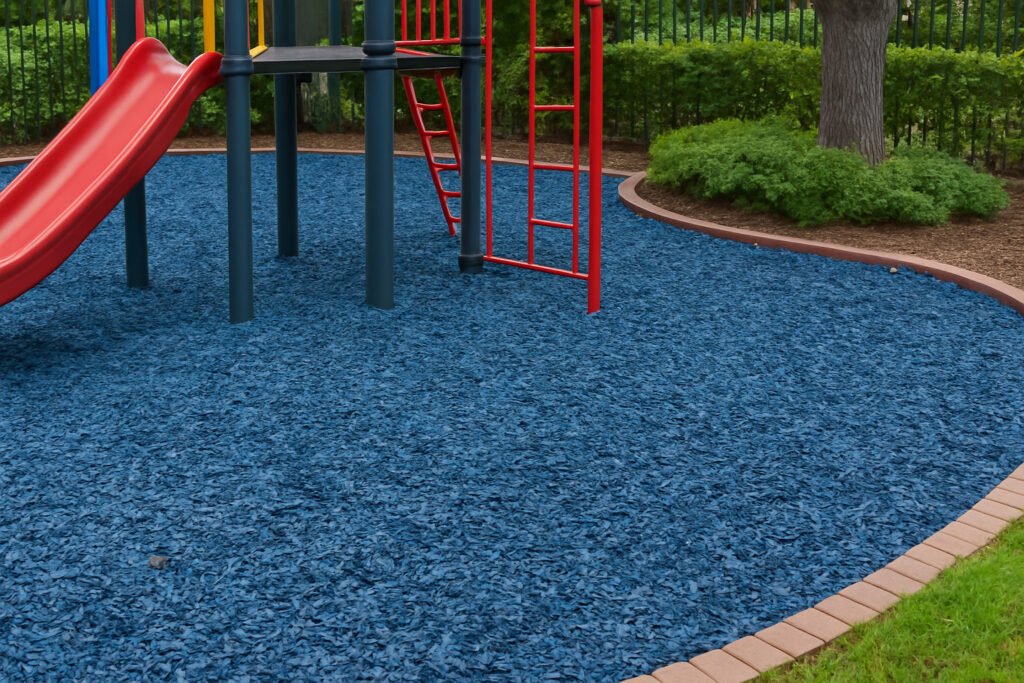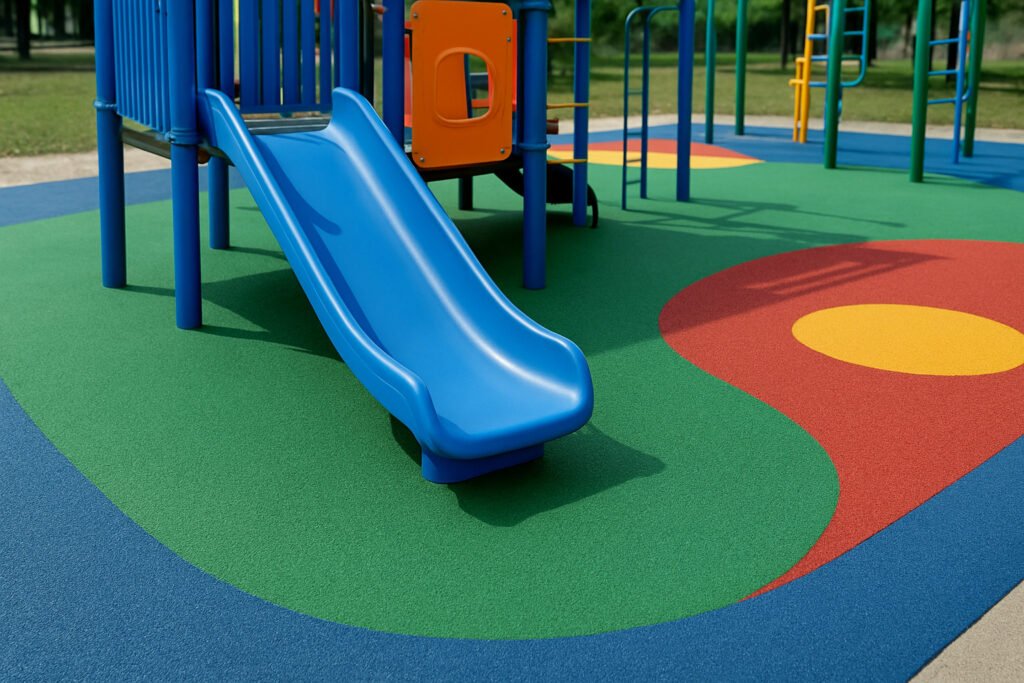Rubber Mulch vs Wet Pour Rubber: Rubber Flooring Decisions
Choosing the wrong outdoor flooring can lead to safety hazards, higher maintenance, and wasted budgets.
Rubber mulch is cost-effective and natural-looking, while wet pour rubber offers seamless safety and long-term durability—your choice depends on budget, safety needs, and design goals.

When it comes to playgrounds, parks, and recreational areas, the flooring is more than just an aesthetic choice—it’s a safety and performance decision. I’ve supplied both rubber mulch and wet pour rubber to projects in Europe, Australia, and the Middle East, and I’ve seen firsthand how the right decision can make or break a project. Let’s explore.
What is Rubber Mulch?
Rubber mulch is made from recycled SBR rubber, often coated with durable color pigments. Its shredded, woodchip-like texture blends naturally into landscaped areas.
Key features:
- Natural appearance that fits garden or park themes
- Good drainage for rainy climates
- Affordable upfront cost
Drawbacks:
- Loose particles can shift over time
- May require raking and topping up
- Color fading possible under intense UV
Common applications:
- Playground borders
- Walking trails and garden paths
- Landscaping around trees or benches
📩 Request a free quote for rubber mulch flooring and get samples shipped to your location.
For more outdoor rubber options, see our Outdoor Rubber Floor range.
What is Wet Pour Rubber?
Wet pour rubber is made by mixing EPDM granules with a PU binder and installing the mixture on-site for a smooth, seamless surface.

Key features:
- Seamless, non-slip, impact-absorbing surface
- Customizable colors and patterns
- Long lifespan with minimal maintenance
Drawbacks:
- Higher initial cost
- Requires professional installation
- Repairs need matching colors and materials
Common applications:
- School playgrounds and kindergartens
- Running tracks and sports areas
- Full-surface recreational spaces
📩 Get pricing for EPDM wet pour rubber installation with EN1177-certified safety options.
You can also read our guide: What Are the Benefits of Wet Pour Rubber?
Rubber Mulch vs Wet Pour Rubber: Side-by-Side Comparison
| Feature | Rubber Mulch | Wet Pour Rubber |
|---|---|---|
| Appearance | Natural, woodchip look | Smooth, colorful, customizable |
| Safety (EN1177) | High, but uneven surface | Very high, even surface |
| Weather Resistance | Good | Excellent |
| Installation | Easier, can DIY | Professional only |
| Cost | Low | High |
| Maintenance | Needs raking, topping up | Easy to clean, patch repair |
| Best for | Budget-friendly, natural settings | High-traffic, colorful play areas |
Which Should You Choose?
- Choose Rubber Mulch if your project budget is limited, you prefer a natural look, and you don’t mind occasional maintenance.
- Choose Wet Pour Rubber if you need maximum safety, want design flexibility, and are investing for long-term use.
In our projects at Lanhefloor, we’ve seen kindergartens choose wet pour rubber for safety and customization, while public parks often go with rubber mulch for cost efficiency.
📩 Contact us now for a tailored flooring recommendation and quote—we deliver certified rubber flooring to over 20 countries.
Related Blog Posts
- What Are the Benefits of Wet Pour Rubber?
- EPDM vs. SBR Rubber Flooring: Which is Better?
- Outdoor Rubber Flooring – Complete Buyer’s Guide
- EPDM Rubber Flooring Installation Guide
Call to Action
Looking for the perfect outdoor safety surface for your project?
📩 Request a Quote for free samples, technical advice, and custom pricing—we deliver certified, high-performance rubber flooring worldwide.
